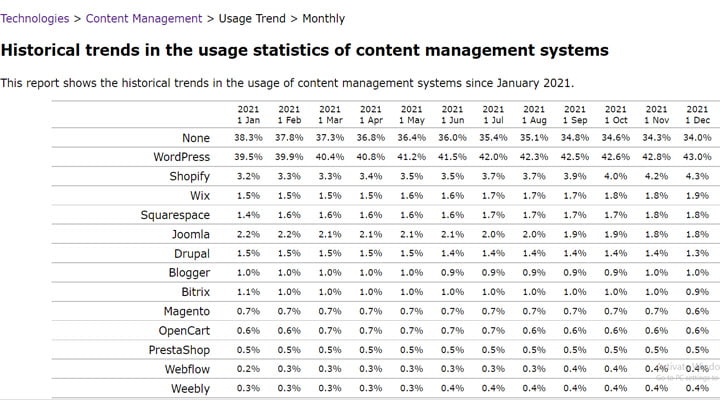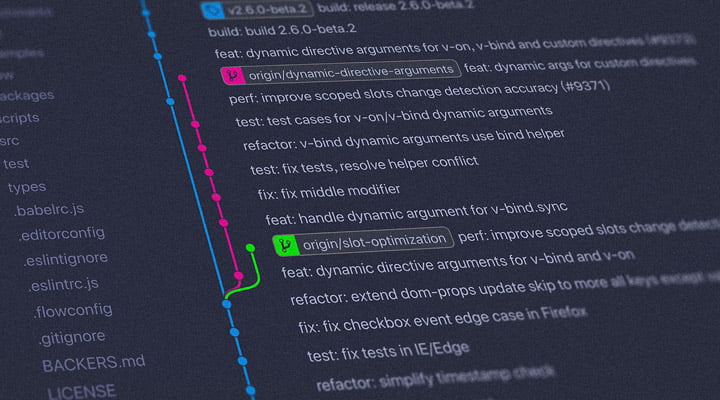WordPress is almost two decades old, and it seems that it will continue to stay for many years. A digital product that is still relevant after two decades is almost unparalleled. Many content management systems (CMSs) were launched after WordPress’ birthday—May 27th, 2003—and are already forgotten, even by their founders. Besides, Internet users are impatient and always ready to test new products and services. Under these circumstances, is WordPress a miracle or an outstanding product?
The correct answer is something in between these two options. WordPress is 100% an excellent CMS that gained traction in the proper context. This CMS started as a blogging platform suitable for casual users. The timing was perfect because content publishing boomed a few years after WordPress’ launching. WordPress was the proper tool at the proper moment.
Headless WordPress has generated some buzz, and people rushed to believe that the days of the old WordPress are gone. Read the following paragraphs to learn more about headless WordPress and how conventional WordPress will evolve.
WordPress Current State

WordPress is a mature product that dominates the market of CMSs by a colossal margin. It’s somehow surprising, but WordPress’ market share keeps on growing. For instance, the WordPress growth in 2021 alone is only slightly smaller than the overall market share of the biggest competitor.
WordPress wouldn’t reach this level if its development team didn’t pay attention to its users’ needs. The developers constantly pushed the envelope and added new and useful features. Even though it started as a blogging platform, nowadays WordPress is suitable for almost any kind of project.
Despite the impressive work of all contributors, WordPress still has room to improve. Performance, security, and the management of complex websites are areas where WordPress has issues. Its admin dashboard is user-friendly, but a few aspects related to site customization might be reconsidered.
The core development team will introduce Full Site Editing (FSE) in 2022. It’s a pretty significant change for the entire WordPress community. Its main purpose is to streamline site-building and make WordPress even more accessible to non-developers. Certainly, it will generate harsh debates in the first months after implementation, but users will adapt to this change.
The success of WordPress resides in the satisfaction of all users. FSE is for everyone, but less trained users will appreciate it more as they will get an improved experience. Instead of writing code or installing a plugin, webmasters will get more customization options directly from the WordPress admin dashboard.
Headless WordPress caters to enterprise projects. It’s not only the contribution of the WordPress development team—it’s a collective work of the entire WordPress community and many startups.
Headless WordPress
To understand headless WordPress you have to understand traditional WordPress. Your standard WordPress install has a monolith approach—the backend and frontend are coupled. That’s why people refer to WordPress as a traditional, standard, coupled, and monolith entity. The backend is the admin dashboard, where you produce content and customize the channel to publish it. The frontend is the platform where people consume the content. In most cases, it’s the blog page or a custom homepage. This is convenient for casual users, but enterprise projects have different needs.
Headless WordPress extracts the benefits of coupled WordPress and implements it on a different platform. The backend remains the same WordPress admin dashboard; it’s a familiar and enjoyable platform for content creation. The front-end is decoupled and allows multi-platform and cross-channel publishing. Practically, the same content on the backend of your site is published on different mediums, such as a mobile app, your own website, third-party website, or social media. In this way, you have full control over the frontend channels. You are no longer restricted by themes and plugins—you can use whatever platform and coding language you want.
Benefits of Headless WordPress
While a simple website doesn’t need the functionalities of headless WordPress, an enterprise project requires them. Headless WordPress comes with many benefits, but it has a few weaknesses as well. The following are the main advantages of headless WordPress.
Multiple Front-end Channels
You are no longer limited to publishing content only on your website, thanks to headless WordPress. A strong business should always be where its customers are. It depends on the business profile, but a simple website isn’t enough these days. Social media and mobile apps are two capital tools to get in touch with clients. In this context, headless WordPress is the ideal solution that simplifies content production and distribution.
Improved Performance

Performance is one of the most significant drawbacks of traditional WordPress. The WordPress development team and a few partners made up a team focused on improving the CMS performance. The results will come in the near future, but at the moment headless WordPress is speedier.
Smashing Magazine nailed down how headless WordPress improves the site performance. TLTR: despite its more complex structure, the headless format is faster than the coupled version.
Use the Favorite Coding Language
Are you a big fan of Python and you don’t like PHP? Headless WordPress is the best solution in this respect. You are free to use whichever front-end platform, and of course, whichever coding language you prefer to deliver the content to the customers. Additionally, it allows changing the tech stack easily and without losing data.
Enhanced Security
The WordPress core is pretty secure and the development team works permanently to make it even more unhackable. However, from a security perspective, the themes and plugins are big vulnerabilities. The more there are, the more insecure the site is. Headless WordPress eliminates both plugins and themes, so it becomes way more complicated for cybercriminals to break into your site.
Weaknesses of Headless WordPress
Nope, headless WordPress isn’t perfect at all! It has a few weaknesses that make it infeasible for most WordPress users. It’s clear that people won’t suddenly abandon the coupled WordPress for the headless format. It has two major cons that limit its adoption.
Unfriendly for Non-Developers

It’s hard to believe that someone lacking serious coding skills may give a try to headless WordPress. The deployment and maintenance of an online business running on headless WordPress require the involvement of a highly-skilled dev or even a team. Someone just testing the waters will immediately get stuck in creating a headless WordPress site.
Budget-unfriendly
Headless WordPress caters to enterprise projects so it makes sense that it isn’t budget-friendly. However, even mid-size businesses might have a problem hiring a developer to deploy and maintain a website. Taking into account the difficult times we face, only a few entrepreneurs take the risk to switch from traditional to headless. Perhaps it’s a profitable decision in the long term, but it’s another major impediment to mass adoption.
Over to You
Headless WordPress is more complicated, with a steep learning curve to master its potential. Undoubtedly, it comes with some innovative concepts and deserves our attention. While some developers speak highly about headless WordPress, I strongly believe that it can’t rival traditional WordPress. The headless approach is perfect for enterprise projects, but for the rest of the businesses is rather expensive and complicated.
In conclusion, headless WordPress is a refined solution for a niche, but it needs substantial improvements to get mass adopted.

Leave a Reply